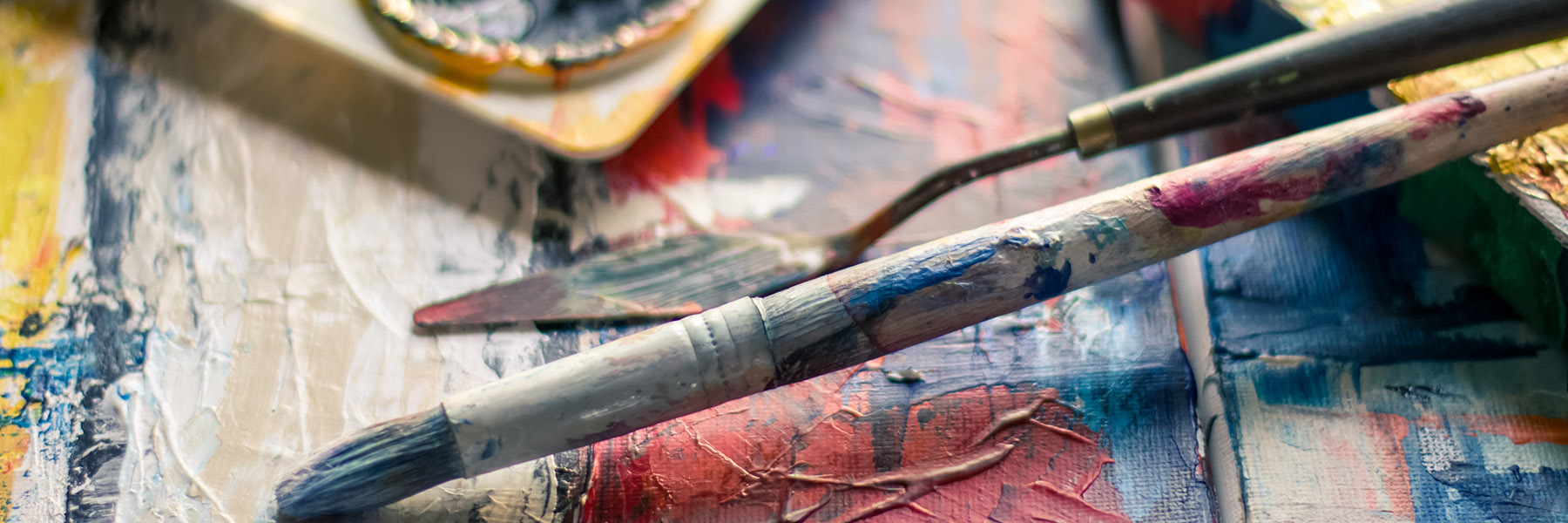The 14th annual Goldfarb Summer Institute took place from May 3 to 17, and was presented by the Department of Visual Art and Art History at York University’s School of the Arts, Media, Performance and Design (AMPD).
Organized by Professors Janet Jones and Michel Daigneault, the annual Joan & Martin Goldfarb Summer Institute in Visual Arts offers University graduate students and the wider community the opportunity to engage with prominent international theorists, artists, curators and critics through seminars, workshops and public lectures.
“The success of our Summer Institute was largely motivated by our students’ desire to have intense exchanges with our guests during a two-and-a-half-week period,” says Daigneault. “The Summer Institute is an amazing opportunity for this exchange of new ideas with national and international artists, curators and art educators, and to build the community both within the program and beyond.”
This year’s Summer Institute explored contemporary painting and curatorial practices within the expanded field of contemporary art and art history. Assemblage theory, as it relates to contemporary painting and curatorial practices, was a critical starting point to the event discussions. Following the approach developed by Jane Bennett in Vibrant Matter, the event provided an opportunity to give a voice to the things and matters used by artists and curators, and question how they converge and interfere with each other to form an assemblage.
Students in curatorial practice were also invited to reflect upon artworks as things that form the complex network of an exhibition rather than with a thematic approach and explore the meanings generated between the parts of an artwork rather than only an expression of their subjectivity or a preconceived subject.
They explored how the approach of assemblage can be used to examine how assemblage reconfigures the dialectic relationship between abstraction and figuration, how can painting, once defined by the handmade gesture, work from a digital image and how does assemblage offer a workable lens through which the artist and curator can examine needs for engaging in a feminist and decolonial critique of art and cultural structures.
“Student growth results from the discovery of different fields of research introduced by our guest speakers and the many thoughtful conversations that came out of it,” notes Daigneault. Through course readings and presentations, panel discussions, and individual studio visits and consultations by prominent curators, art historians and artists, these approached were examined with the support of guests from the New York, Toronto, Vancouver and Montréal art communities.
MA and PhD art history students also collaborated, as curators, with the MFA and PhD students, as artists, on the visualization, planning and realization of an exhibition in the SPG and the Gales Gallery.
The event also welcomed guest Eunice Bélidor, curator of contemporary and Canadian art, Montréal Museum of Fine Arts to speak about her current research projects, as well as painters Christine Major and Beth Stuart.
Major’s painting practice is engaged, marked by identity and feminist issues, in addition to taking a critical look at the function of the image in the media and its impact on the representation of bodies. She has had over 20 solo exhibitions in Canada and has been a speaker in various Canadian contexts. Stuart’s work creates alternative plot points in the narrative of modernist abstraction. Stuart works in an expanding range of media including writing, painting, ceramic, textiles and sculptural installation.
In collaboration with The Power Plant Art Gallery, the Summer Institute welcomed Barry Schwabsky to deliver the “Painting in the Medium of Life” lecture. Schwabsky is an art critic, art historian and poet based in New York City. He is currently an art critic for The Nation and co-editor of international reviews for Artforum. His essays have also appeared in publications such as Flash Art, Contemporary, Artforum, London Review of Books and Art in America.
“The lecture that Barry Schwabsky gave was received enthusiastically by the students and the art milieu public. His historical analysis of the ‘medium’ in art disciplines, its meaning and use during the 20th century was a revelation for many of the people who attended the lecture,” says Daigneault.
Throughout the week, the Summer Institute also hosted curators and art historians like Richard Hill, Sarah Milroy and Marissa Largo, and artists Gary Evans, Monica Tap, Doug Kirton, Kai Chan, Scott Lyall, Maria Hupfield and Blue Republic.
To learn more about the Joan & Martin Goldfarb Summer Institute in Visual Arts, visit the website.


